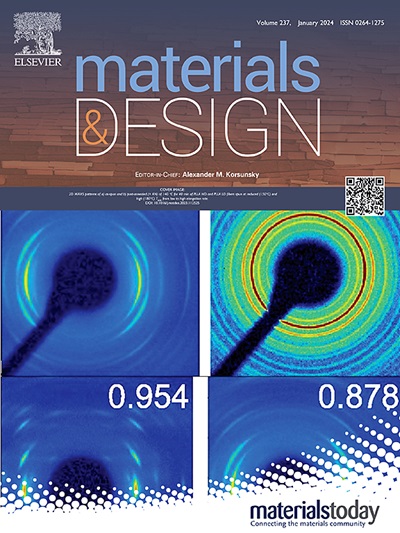PLLA/PEO blend as self-curing material for a biodegradable Eustachian tube stent
IF 7.6
2区 材料科学
Q1 MATERIALS SCIENCE, MULTIDISCIPLINARY
引用次数: 0
Abstract
Within this work, blending of high molecular weight (HMW) PLLA with HMW polyethylene oxide (PEO) as self-curing biodegradable stent material for potential treatment of Eustachian tube dysfunction (ETD) is reported. Blending with PEO significantly enhances the material’s mechanical properties, enabling the stent to conform to the non-circular, tapered cross-sectional shape of the Eustachian tube (ET). Elution of PEO leads to self-curing of the stent, enabling long-term support of the ET. The PLLA/PEO stents were able to withstand radial deformation of up to 33 % and up to 12 %. Radial strength of the stent prototypes (90/10: 203 ± 37 kPa and 80/20: 232 ± 52 kPa) was slightly lower compared to the benchmarked commercial Absorb, Elixir and RevaMedical stents (250/218/318 kPa), but exceeded the values of the former two after 7 d post-curing in vitro (90/10: 301 ± 59 kPa and 80/20: 324 ± 12 kPa). Radial stiffness (90/10: 7.63 ± 2.74 kPa and 80/20: 9.15 ± 3.03 kPa) was also comparable (Absorb/Elixir/RevaMedical stents: 6.08/5.31/6.99), but increased to 15.07 ± 2.57 kPa (90/10) and 15.89 ± 1.53 kPa (80/20) after PEO elution over 7d in vitro, substantially increasing scaffolding properties.

PLLA/PEO共混自固化材料用于可生物降解耳咽管支架
在这项工作中,报道了高分子量(HMW) PLLA与HMW聚乙烯氧化物(PEO)共混作为自固化生物降解支架材料用于治疗耳咽管功能障碍(ETD)的潜在方法。与PEO的混合显著提高了材料的力学性能,使支架符合咽鼓管(ET)的非圆形、锥形截面形状。PEO的洗脱导致支架的自固化,使ET能够长期支撑。PLLA/PEO支架能够承受高达33%和12%的径向变形。支架原型的径向强度(90/10:203±37 kPa和80/20:232±52 kPa)略低于基准的商业支架(250/218/318 kPa),但在体外固化7 d后超过了前两者的数值(90/10:301±59 kPa和80/20:324±12 kPa)。径向刚度(90/10:7.63±2.74 kPa和80/20:9.15±3.03 kPa)也与之相当(吸收/Elixir/RevaMedical支架:6.08/5.31/6.99),但PEO洗脱7d后增加到15.07±2.57 kPa(90/10)和15.89±1.53 kPa(80/20),支架性能大幅提高。
本文章由计算机程序翻译,如有差异,请以英文原文为准。
求助全文
约1分钟内获得全文
求助全文
来源期刊

Materials & Design
Engineering-Mechanical Engineering
CiteScore
14.30
自引率
7.10%
发文量
1028
审稿时长
85 days
期刊介绍:
Materials and Design is a multi-disciplinary journal that publishes original research reports, review articles, and express communications. The journal focuses on studying the structure and properties of inorganic and organic materials, advancements in synthesis, processing, characterization, and testing, the design of materials and engineering systems, and their applications in technology. It aims to bring together various aspects of materials science, engineering, physics, and chemistry.
The journal explores themes ranging from materials to design and aims to reveal the connections between natural and artificial materials, as well as experiment and modeling. Manuscripts submitted to Materials and Design should contain elements of discovery and surprise, as they often contribute new insights into the architecture and function of matter.
 求助内容:
求助内容: 应助结果提醒方式:
应助结果提醒方式:


